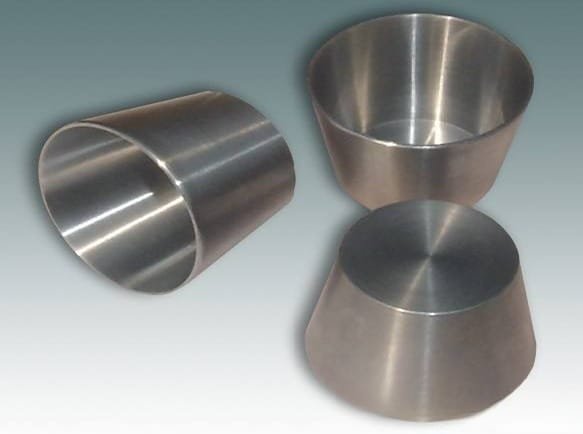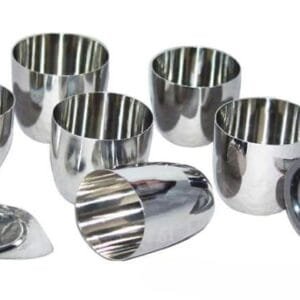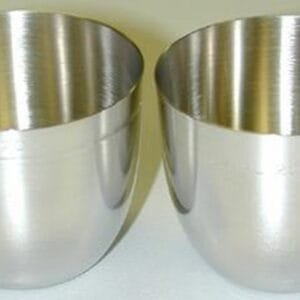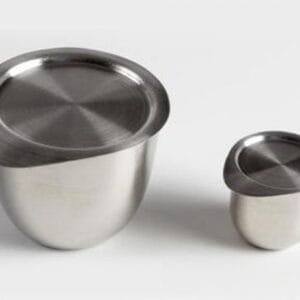Standard Crucible Description
TFM continuously develops standard crucibles (Au, Ag, Ir) to stay competitive and provide customized solutions for emerging applications. As a leading supplier, TFM offers a wide range of products, especially for large area coating applications, with a focus on flat glass coatings.
We invite you to share the technical and commercial factors most critical to your company when it comes to standard crucibles (Au, Ag, Ir). Whether it’s fabrication cost, metal management, grain structure, material purity, or a combination of these, we ensure that we deliver sputter targets that precisely meet your needs.
Standard Crucible Specification
Product Name | Catalog Number | Capacity (ml) | Diameter (mm) | Height (mm) | Thickness (mm) | Weight (g) |
Gold crucible standard with lid | CC0101 | 30 | 39 | 40 | 0.3 | 30 |
CC0102 | 50 | 44 | 44 | 0.32 | 50 | |
CC0103 | 25 | 37 | 37 | 1 | 27 | |
Silver crucible standard with lid | CC0104 | 30 | 39 | 40 | 1 | 32 |
CC0105 | 50 | 44 | 44 | 1 | 48 |





Reviews
There are no reviews yet.